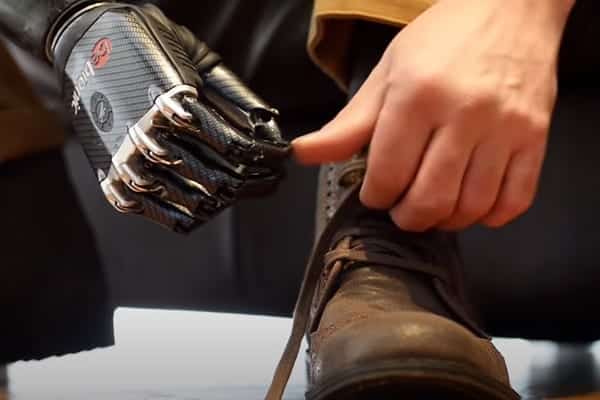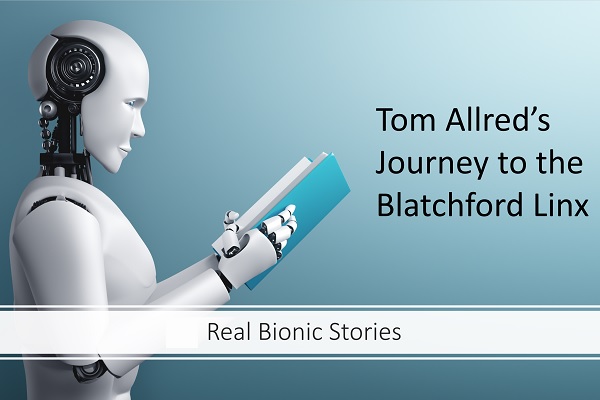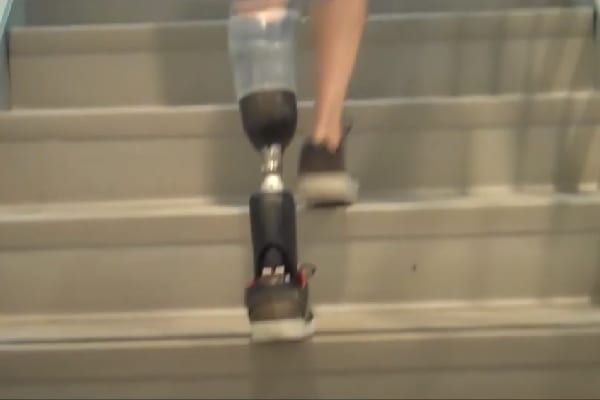Our Inspiration
Tilly Lockey lost both her hands at age 15 months. But when you watch her videos, you don’t feel any sense of loss. What you see is a bright, happy teenager with unlimited potential.
Much of that is a credit to her and her family. But as she says in this video, having cool bionic arms helps.
Our Mission
The Bionic Revolution is here. It is already improving the lives of those who have lost physical or neurological abilities to accident, disease, or genetic disorders.
Our main goal is to help patients in these categories to understand their bionic options free of commercial influence. An informed patient is an empowered patient.
Key Resources
The following pages provide quick access to resources of special interest:
Latest Research Articles

Surgical Techniques That Improve the Use of Bionic Limbs
This document helps amputees monitor all current and future surgical techniques that may improve the use of bionic limbs and/or reduce pain.

Which Myoelectric Pattern Recognition System is Right for You?
We are entering a period of bionic arm & hand development that is both exciting and potentially confusing. This article is meant to clarify the most recent options for pattern recognition systems.

Myoelectric Pattern Recognition for Bionic Arms & Hands
If you want to avoid surgery, combining myoelectric skin sensors with pattern recognition is currently your best option.

Bionic Hands: Finding the Right Myoelectric Control System
Bionic hands hold the promise of greatly restored capabilities but their myoelectric control systems are not as reliable as they need to be.

Bionic Arm & Hand Control Systems
Some believe that the most important parts of a bionic arm/hand are its electromechanical components. This is not true. The most important component is the user control system.

Neural Interface Surgery
Neural interfaces are currently the leading option to provide true sensory feedback from bionic limbs, but they have significant drawbacks.

Implantable Myoelectric Sensors
Implantable myoelectric sensors eliminate many of the drawbacks of skin-surface sensors. The question is, are they worth invasive surgery?

Targeted Sensory Reinnervation (TSR)
Targeted sensory reinnervation is a method where a patch of skin is denervated, then reinnervated with nerve fibers from an amputated limb.

Regenerative Peripheral Nerve Interface (RPNI)
The Regenerative Peripheral Nerve Interface (RPNI) reduces painful neuromas and strengthens muscle contractions for enhanced bionic control.
Latest Technology Articles

A Complete Guide to Bionic Arms & Hands
Everything you need to know about bionic arms and hands, including all the current devices, technologies, and the latest research. Continuously updated, this page is intended as your one-stop repository for information on upper-limb bionics.

A Complete Guide to Assistive Robotic Gloves
Assistive robotic gloves hold great promise to restore lost hand functionality after a stroke, disease, or accident. They can also help with rehabilitation

A Complete Guide to Bionic Legs & Feet
Everything you need to know about bionic legs, knees, ankles, and feet. Continuously updated, this page is your one-stop repository for all the latest information on lower-limb devices, technologies, and research.

TASKA Hand from TASKA Prosthetics
Rugged, waterproof, and capable of operating in dusty environments, the TASKA is the first bionic hand designed specifically for durability.

Bionic Leg Price List
This price list is intended to give potential users a general idea of the price for each microprocessor ankle/foot, knee, and integrated bionic leg currently available on the market.

Microprocessor Knee Price List
This price list is intended to give potential users a general idea of the price for each microprocessor knee currently available on the market.

Current Options for Bionic Legs
A complete list of all the main microprocessor ankles, knees, and fully integrated bionic legs currently on the market. Even better? This list and all of its supporting articles are continuously updated.

Current Options for Microprocessor Knees
Interested in microprocessor knees? This page shows you the top 10 microprocessor knees on the market along with links to full reviews.

V-One Microprocessor Knee from Teh Lin
The V-One Microprocessor Knee combines a 4-bar polycentric design, microprocessor control, and pneumatics to deliver a compelling solution.
User Feedback on Bionic Devices

Bionic Limb User Satisfaction Statistics for 2021
Here is what our User Satisfaction Surveys have taught us about bionic limbs as of December 31, 2021.

Ottobock C-Leg User Satisfaction Report
The Ottobock C-Leg is the 2nd-highest-rated bionic knee in our User Satisfaction Surveys in both general user satisfaction and brand loyalty.

Seeking User Feedback on Bionic Devices
At BionicsForEveryone.com, we are very clear about where our loyalties lie when it comes to bionic devices, and that is with end-users. We don’t have anything negative to say about bionic companies. On the contrary, we have great respect for…

Bionic Limbs — First Impressions From Our User Satisfaction Surveys
Check out our early impressions from the results of our User Satisfaction Surveys on bionic limbs. Results for individual devices to follow.
Real Bionic Stories

Bionic Feats: Heavy-Duty Hand Work
Bionic hand technology is improving all the time but it can still be fragile. In these videos, we show you examples of far more rugged use.

Bionic Feats: Tying Shoelaces
Tying shoelaces is a real challenge for bionic hands because it requires significant dexterity. For a hand to truly play its part in this task, it should have good hand speed and the ability to switch grips with ease.

Tom Allred’s Journey to the Blatchford Linx
In this article/interview, I talk with one bilateral above-the-knee amputee’s 60-year journey from wooden sockets to a pair of Blatchford Linx bionic limbs.

Bionic Feats: Conquering Stairs
A few decades ago, going up and down the stairs was an ordeal for lower-limb amputees, even dangerous. These five short videos show how bionic knees and ankles have made this important daily task so much easier!

Bionic Feats: From Wheelchair to Walking
For many centuries, paraplegia often meant confining patients to wheelchairs. This is no longer the case. Bionic exoskeletons are now making it possible for paraplegics to rise from their wheelchairs and reclaim their freedom.

Bionic Feats: Let There Be Music
Some of the amputees playing music in these videos are using bionic devices; others are not. Either way, they’re incredibly inspirational!